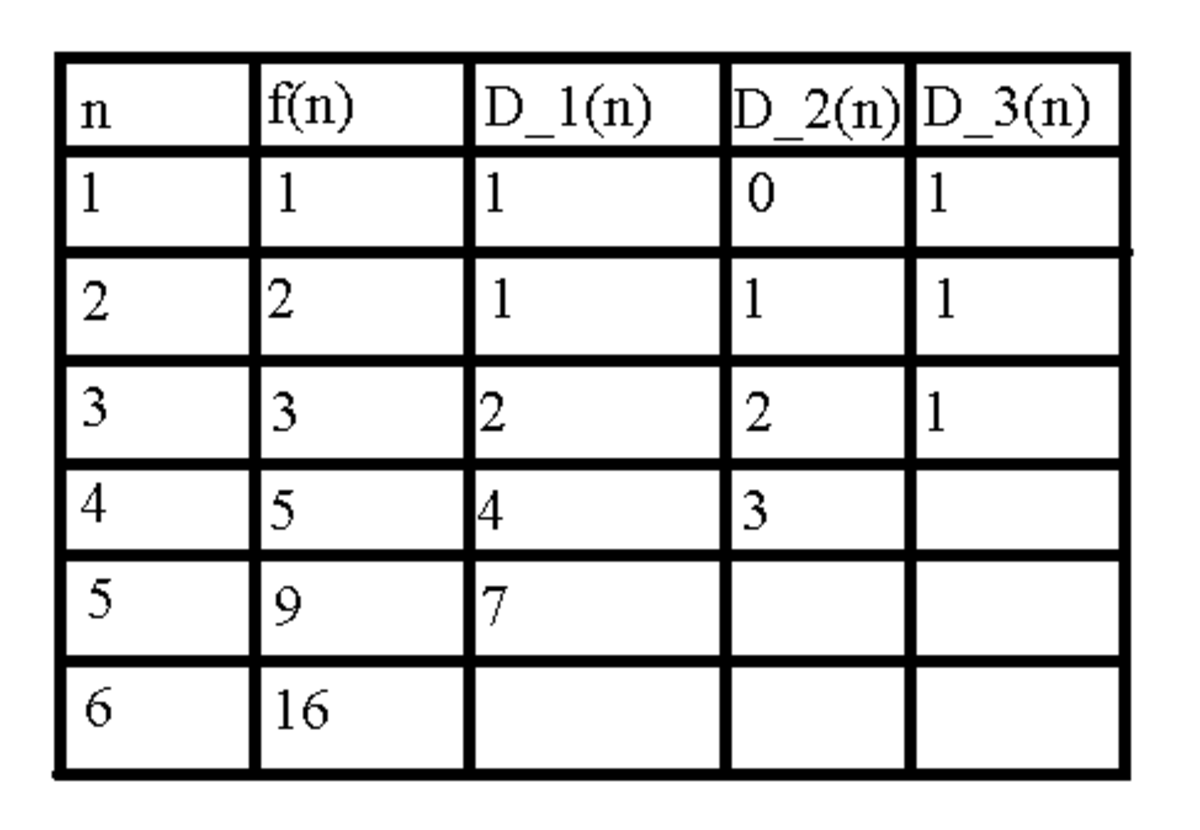A cubic polynomial
If p(x) is a cubic polynomial with p ( 1 ) = 1 , p ( 2 ) = 2 , p ( 3 ) = 3 , p ( 4 ) = 5 , then find p ( 6 ) .
The answer is 16.
This section requires Javascript.
You are seeing this because something didn't load right. We suggest you, (a) try
refreshing the page, (b) enabling javascript if it is disabled on your browser and,
finally, (c)
loading the
non-javascript version of this page
. We're sorry about the hassle.
4 solutions
Good Solution!
Solved in the same way! :). Can you tell me if this is what is Lagrange interpolation? Or is that different?
Log in to reply
@Krishna Ar According to me, it's not Lagrange Interpolation.
http://mathworld.wolfram.com/LagrangeInterpolatingPolynomial.html Although, we still can use lagrange interpolation to get the polynomial (because we already know values in 1+def f points)
Log in to reply
Thanks for replying... @Kishlaya Jaiswal (though now, I have already learnt about it! )
We can construct a difference table as follows:
 For those who do not know what is a difference table,they should read the
For those who do not know what is a difference table,they should read the
Method Of Differences Wiki
I looked at p ( x ) − x (as below) but the method of differences would also give the same result. Cubic functions have constant third differences.
p ( x ) = a x 3 + b x 2 + c x + d Plugging in values of x , we get a system of linear equations p ( 1 ) = a + b + c + d = 1 p ( 2 ) = 8 a + 4 b + 2 c + d = 2 p ( 3 ) = 2 7 a + 9 b + 3 c + d = 3 p ( 4 ) = 6 4 a + 1 6 b + 4 c + d = 5 Solving the system of linear equations give a = 6 1 b = − 1 c = 6 1 7 d = − 1 So p ( 6 ) = 6 1 ( 6 3 ) − 6 2 + 6 1 7 ( 6 ) − 1 = 1 6
Put g ( x ) = p ( x ) − x which is a polynomial of degree 3 and vanishes at 1,2 and 3. Thus g ( x ) = A ( x − 1 ) ( x − 2 ) ( x − 3 ) Since g ( 4 ) = A ( 4 − 1 ) ( 4 − 2 ) ( 4 − 3 ) = 1 So A = 1 / 6 . Thus p ( x ) = x + g ( x ) = x + 6 ( x − 1 ) ⋅ ( x − 2 ) ⋅ ( x − 3 ) Hence p ( 6 ) = 1 6 .